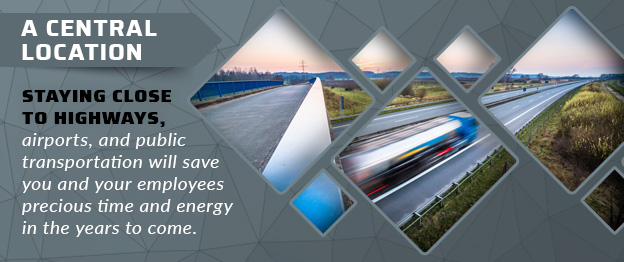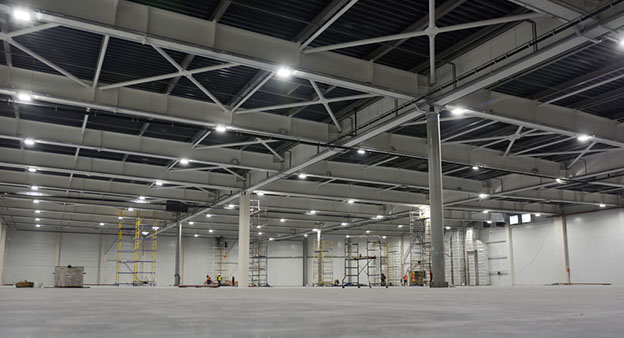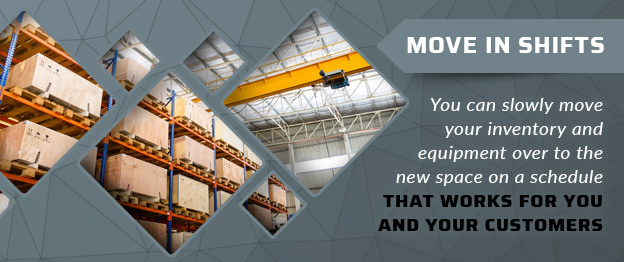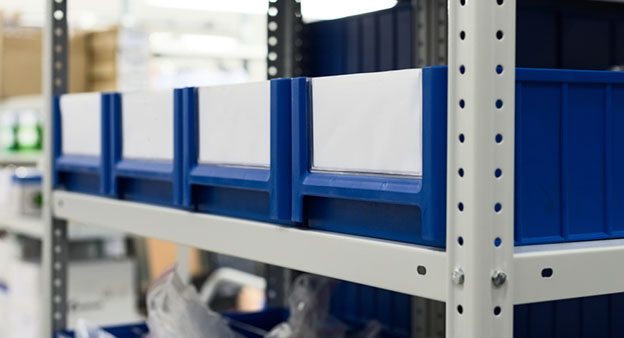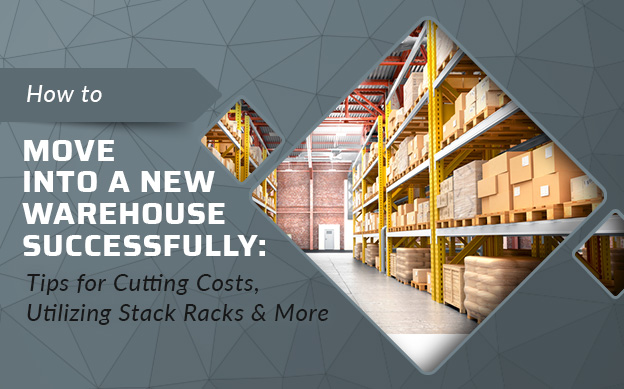
Your warehouse or distribution center is the heart of your business. It’s how your company’s products move from one location to the next, ensuring you can meet the needs of your customers on a regional or national level. But warehouses don’t last forever.
You may find your company relocating to a new warehouse for several different reasons. Perhaps the lease on your current distribution center is about to come to an end. Or your operations are expanding and it’s time to move to a larger space. In order to stay competitive, you may decide you need a warehouse that’s closer to your customers, thus shortening the delivery timeline.
Whatever the case may be, we’re here to walk you through the warehouse moving process. Here’s what you need to know about relocating to a new distribution center.
FINDING THE RIGHT WAREHOUSE
Assuming you have yet to find your next warehouse space, keep these tips in mind as you go about looking at potential spaces to lease. If you move into a space that’s not right for your business, in terms of location, size, or amenities, chances are your company will need to move again to a new space sooner rather than later. Moving is expensive, so make sure you commit to a space that’s going to serve you and your business well for the foreseeable future.
Anticipating Your Future Needs
Your business is always changing. Even if a warehouse space seems like a good fit right now, try to anticipate your future needs. Compare your inventory levels over the past few years, so you have a better sense of how these levels may continue to change over time. If your inventory levels have been rising over the years, make sure you find a warehouse with extra space that can accommodate your future needs.
Industries are always changing, as well. New technology and industry best practices may change the way you do business over time. From smart pickers and stockers to automated business tools, try to imagine how your business sector will look 10 or 20 years down the line. Read up on the latest trends in your industry so you can better anticipate your company’s future needs. Look for a space that leaves the door open for growth and technological innovation.
Consider Your Workflow
As the owner or manager of your company, make sure you understand your team’s current workflow before choosing a new warehouse space. Make sure you fully understand the day-to-day operations of the facility, including what it’s like to work in the warehouse on a daily basis. Talk to your employees to get a better sense of your current warehousing challenges and how things can be improved. Incorporate these ideas into the decision-making process, so you can transform your operations in more ways than one. Less than 30% of U.S. warehouses are operating efficiently, so look for ways to optimize your workflow.
Access to a Working Population
Every warehouse needs employees. If you’re planning on hiring new staff, make sure you have access to an appropriately skilled population that’s actively looking for work. (You may have to spend more than anticipated on recruitment costs if there are simply too many open positions to fill in the area.)
You also need to make sure your new employees can easily commute to work, so find a warehouse with a central location. Staying close to highways, airports, and public transportation will save you and your employees precious time and energy in the years to come.
Seek Out Expert Advice but Stay Involved
When looking for and setting up your new warehouse, it’s always a good idea to consult a professional. Logistics consultants can help you identify the current and future needs of your business while comparing different spaces in real time. Again, this is one of the most important decisions your business will ever make, so don’t rush the process. Make an informed decision and make use of this person’s expertise.
Only Paying for What You Need
Warehouse rental rates have been on the rise for several years now. If you want to save money on your new space, make sure you’re only paying for the features you need. Before you meet with a real estate agent, make sure you have a solid understanding of what you can afford and what features are essential to your business. You may have to sacrifice space for location or vice-versa but putting too much space between you and your customers could hurt you down the line. Balance your needs and those of your customers with sound economic decision-making for the best results.
GETTING READY FOR THE MOVE
Once you’ve settled on a new warehouse, it’s time to close down your existing operations and transition into the new space. Use these tips to make the process as painless as possible.
Itemize the Transportation Process
Moving out of your existing warehouse might seem a tad overwhelming at times, but, if you plan out every aspect of the process, you can easily keep up with everything on your to-do list. Create a schedule detailing what items and equipment need to be moved and when. Coordinate with your moving company beforehand so you have an accurate idea of when these items will arrive. Don’t lose sight of your customers’ needs during the process. Try to schedule the move around current orders so you don’t disrupt your operations.
Keep Employees Informed
Don’t leave your employees out of the loop during the moving process. The decisions you make are bound to have a big effect on their lives over the next few months, so make sure they understand what’s happening with the company as you make decisions. On average, labor costs account for 65% of most warehouse facilities’ operating budgets, so make sure your employees have the information they need to accomplish these goals efficiently
Come in with a Plan
Once you arrive at your new warehouse, don’t just start dumping equipment and inventory randomly throughout the space. Ensure there’s a method to the madness, so you don’t end up creating more work for yourself and your employees down the line. Start by filling the space with new storage containers and shelving units so you can load your items into their new home as soon as you arrive. Map out how you’re going to use the space beforehand, so you have an idea of where things need to be.
Consider Moving in Shifts
Depending on the size of your operations, moving in shifts might make the most sense for your business. You can continue using your existing warehouse for several weeks and months until you get the new space up and running. You can slowly move your inventory and equipment over to the new space on a schedule that works for you and your customers, especially if you still have dozens of orders to fill.
TIPS FOR MAKING THE MOST OF YOUR NEW WAREHOUSE
Now let’s dive into all the ways you can make the most of your new warehouse space. Focusing on organizational efficiency from the start will help you avoid costly mistakes down the line.
Plan Out Your Space with a Test Run
As you go about setting up your space, consider organizing a trial run before you put the space into action. Try filling some orders with a few crew members to get a sense of what’s working and how things can be improved. Even if you plan out your every move, you won’t know how it feels to use the space until you start putting it to use. Instinct will quickly take over and you’ll likely start making changes on the fly. A trial run helps you stay flexible during this process instead of committing to a layout that’s less efficient.
Stay Organized with Stack Racks
In order to make use of the space, you need to utilize the right storage equipment, including stack racks for storing items on top of one another. Stack racks help you make the most of your floor space by getting your inventory off the ground. You can break up the space with aisles, helping your employees quickly find the items they need. Organize each aisle based on product categories that make sense to you and your team. It’s always a good idea to place the most popular items closer to the door, so your employees can retrieve them quickly throughout the day. Heavier items should also be stored closer to the ground to avoid accidents and falls. You also don’t want to overwhelm your stack racks by putting the heaviest items on top.
Organize Larger Items with Industrial Storage Bins
Use industrial storage bins to separate and organize dissimilar items. These large plastic containers are affordable and easy to wheel around, so you can keep your warehouse nimble. They’re perfect for storing larger items and goods that you need continuously throughout the day. You can also use these bins to get ready for outgoing deliveries. Keep items that need to go out for delivery in industrial storage bins near the loading dock. You can also use them to cart around materials and supplies for your team.
Separate Smaller Items with Plastic Organizer Bins
Plastic organizer bins are perfect for keeping track of smaller items like screws, tiny consumer goods, packing supplies, and other materials. Keep your bins in a metal cabinet or spread them out on your stack racks for fast retrieval. Each bin comes with a place to label the container, so everyone on your team can quickly find what they need. Use plastic organizer bins to keep these smaller items contained and easily available.
Wire Storage Baskets for Collapsible Storage
Wire storage baskets are a great alternative to industrial storage bins and other large storage containers. You can wheel wire storage baskets around for more flexibility in your new warehouse. They’re also completely see-through, so your team will instantly recognize what’s inside. You can also collapse these containers when they’re not in use, helping you make more room around your warehouse. When more inventory arrives, you can quickly deploy more baskets as needed.
Use Proper Labels and Signage
Once you have these storage supplies and containers in place, it’s time to start labeling these containers based on they’re being used. Make sure your containers have clear, easy-to-read labels that tell new and existing employees what they can find inside. If any of these supplies come with special handling instructions, include those on the label as well.
Your employees can also get lost in a maze of aisles. Install overhead signs around your warehouse to make sure your employees know how to move around the space. Use arrows and product categories to point them in the right direction. All these areas should be properly lit so everyone can read the signs without squinting or wearing out their eyes.
MOVING IS CHALLENGING BUT REFRESHING
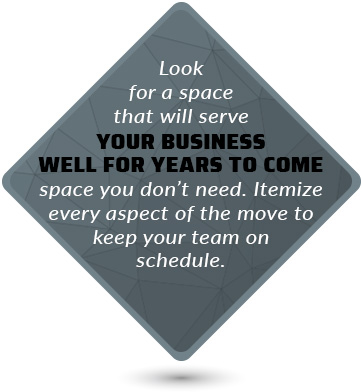
Once you arrive at your new warehouse space, you can start filling things out with the right storage supplies and equipment. Invest in stack racks, so you can store your inventory on top of each other. Plastic organizer bins and industrial storage bins are great for housing all kinds of items, goods, and supplies.
Moving into a new warehouse is like hitting the refresh button. Start off on the right foot and create the ultimate warehouse for your business today!
